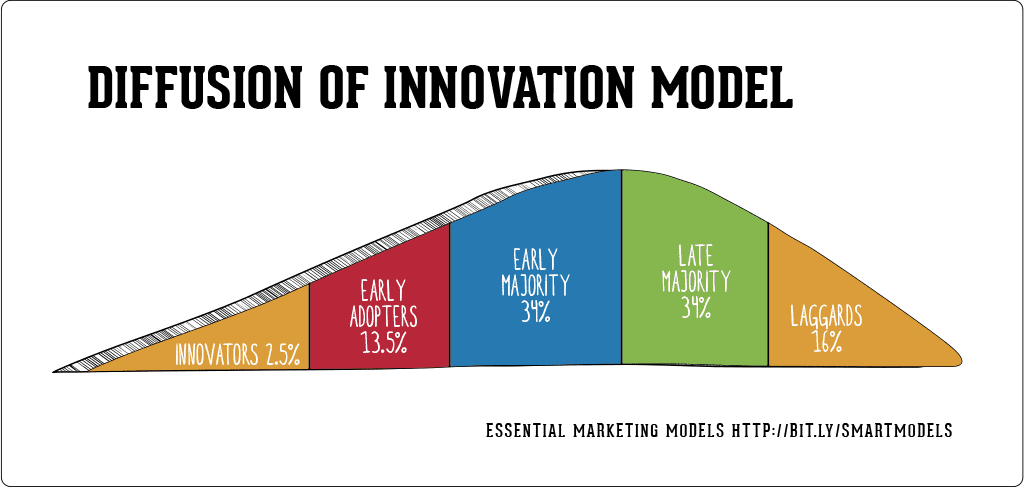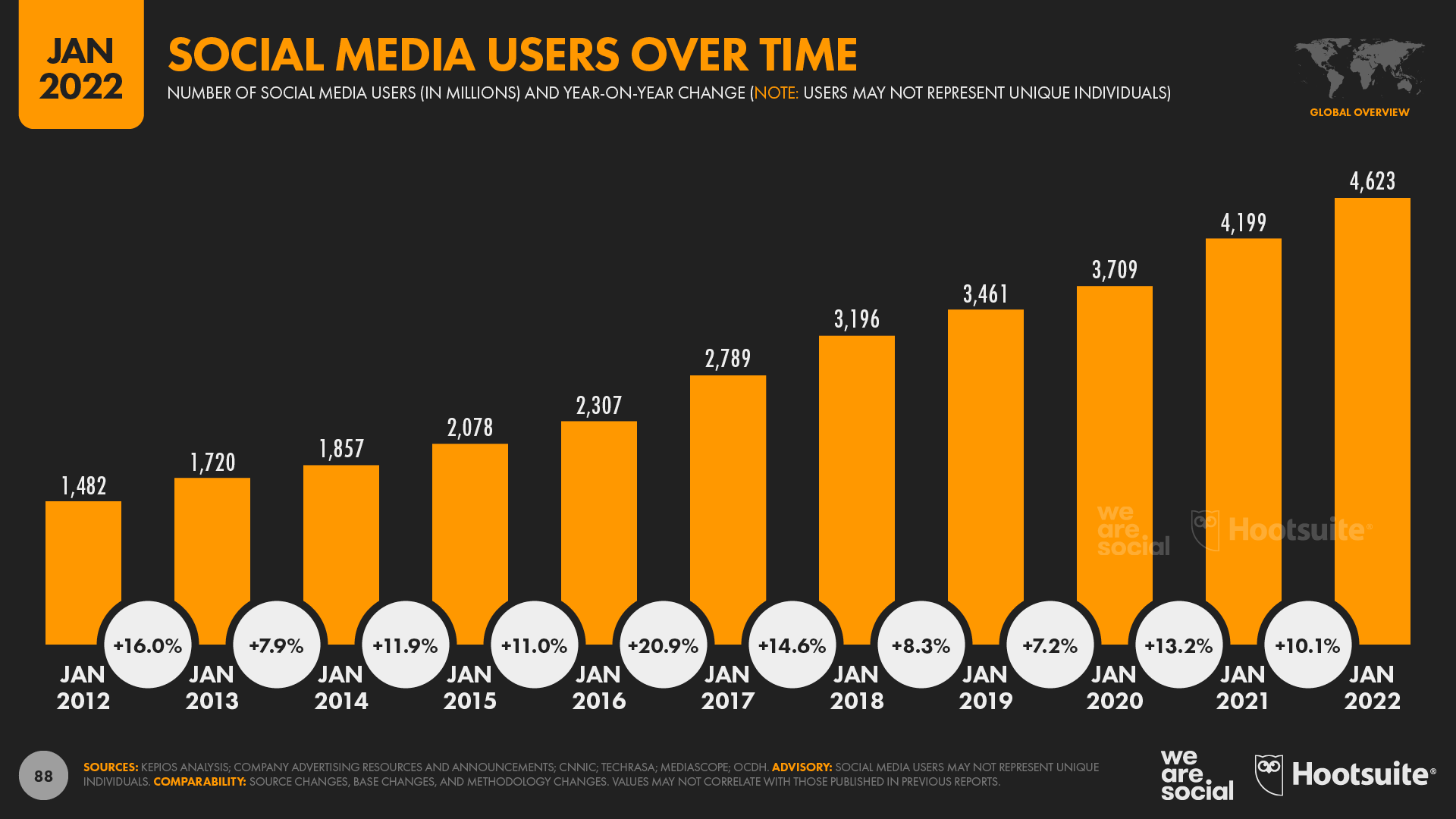The Diffusion of Social Media
The use of social media has rapidly grown since the end of the twentieth century and has changed how we communicate with others. It has had an immense impact on society by connecting the world and giving a close-up look into each other's lives. Many positive impacts include increased communication, networking opportunities, long-distance/global communication, brand growth, employment opportunities, content creation, (mostly) a marketplace of ideas, increased creativity, and creating a place of belonging. Some negative impacts include cyberbullying, cybersecurity, stalking, phone addiction, fake news, body image issues, mental health issues, FOMO (fear of missing out), suicidal thoughts, eating disorders, and anxiety. Many of the positive impacts listed above are why users choose to join social media and are active on their accounts. Of course, the negative impacts are reasons why the small percentage of people who are not on social media choose not to be.
Diffusion of Innovation Adapter Categories
The rise of social media's popularity did not happen instantly. Social media was adopted, updated, and evolved to become the platforms we see today. As social networking sites gained more and more users, popularity grew hand in hand with the growth of technology. The theory of diffusion uses five major elements of adapter categories to describe the diffusion of social media over time.
The Innovators: The people are the guinea pigs of innovation. They want to be the first to try the innovation, explore its qualities and are willing to take risks. When relating to social media, these are the users that are interested in and curious about what these platforms have to offer to society.
Early Adopters: These are the people who are ring leaders for innovation. They embrace change and are open to updating the innovation. They are willing to adapt too changes and have their opinion heard to advance whatever innovation they are pursuing.
Early Majority: These are the people who are willing to adopt ideas before most but still need to see evidence of its success and the advantages of the innovation. They need to understand and know its effects on society and how others will react to the innovation as well.
Late Majority: The are the ones who are skeptical of change and are only willing to adapt to innovations if it is shown to be a solid and established success.
Laggards: These people are bound to traditions and will not budge to change things if it does not need fixing. They are usually the hardest group to persuade to adapt to change in innovations. Usually, these people will only consider changing if they are pressured, forced, or shown statistics that will 100% endorse the innovation.
I believe that in terms of social media, many of the people who fall into these different categories will be determined by their generation. Many of the innovators, early adopters, and early majority would fall into Generation Z, Millennials, and Generation X. Many of the Late Majority and the Laggards would fall into the Baby Boomer and Silent Generations. Each generation has experienced different innovations in technology and, therefore, different innovations in social media. We see it so often in today's world where the age gap causes a technology gap where the Baby Boomer and Silent Generation struggle to learn how to use new technology and social media pages. Then we see four-year-olds already efficiently using iPads. These innovations are open to everyone, but I believe that age is a definite factor when looking at the diffusions of social media.Social Media's Diffusion in the 21st Century
Social media's large presence in society grew, as mentioned above, hand in hand with technology. With the updates in technology occurring, specifically "smart technology," the expansion of social media was widespread as Innovators began creating more and more ways for digital communication, thus increasing the usage of social media. You see a rise in social media in the 21st century after technology companies like Apple begin creating and updating their smartphones, laptops, iPads, and more.
For example, one of the leading social networking platforms, Facebook,, was created by Mark Zuckerberg only eighteen years ago. Facebook now has an estimated 2.9 billion global users and is still currently ranked 1st among the world's most active social media platforms. The rise of this platform influenced the rise and creation of other platforms such as Instagram and Snapchat. These social media platforms have now become a main channel of communication and have taken over society. It spreads from the innovators to the early adapters who share these platforms with friends, who share with their friends, who share with their friends, and so forth.Overall, I know there are positives and negatives to these innovations and especially social media. I do believe that the positives outweigh the negatives, although I do believe the negatives are valid reasons for laggards not to want to join social media platforms. There is always a risk with any innovation, but, as the diffusion theory has shown us, when one is willing to jump, others will always follow; it's just a matter of how many.




No comments:
Post a Comment